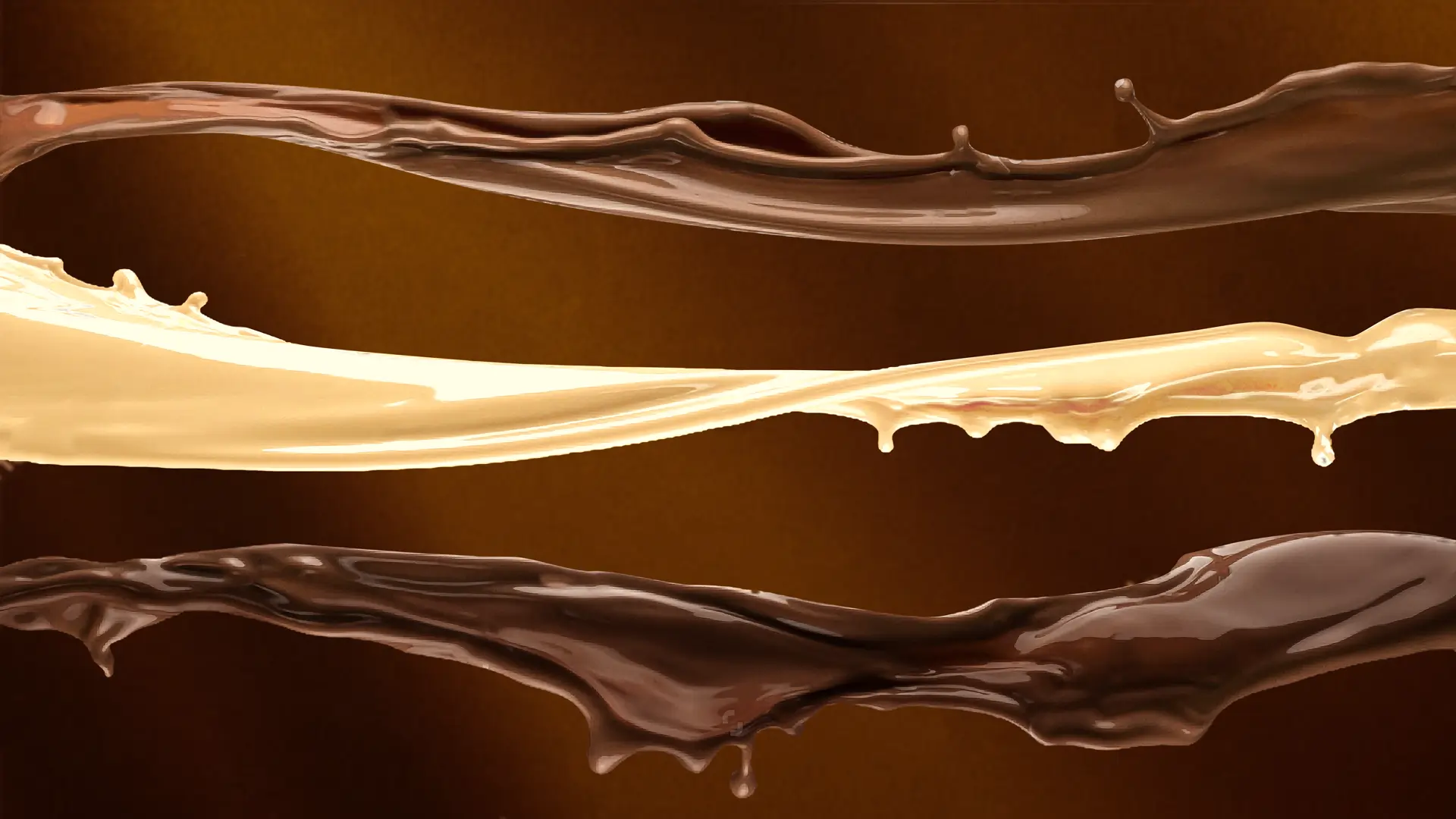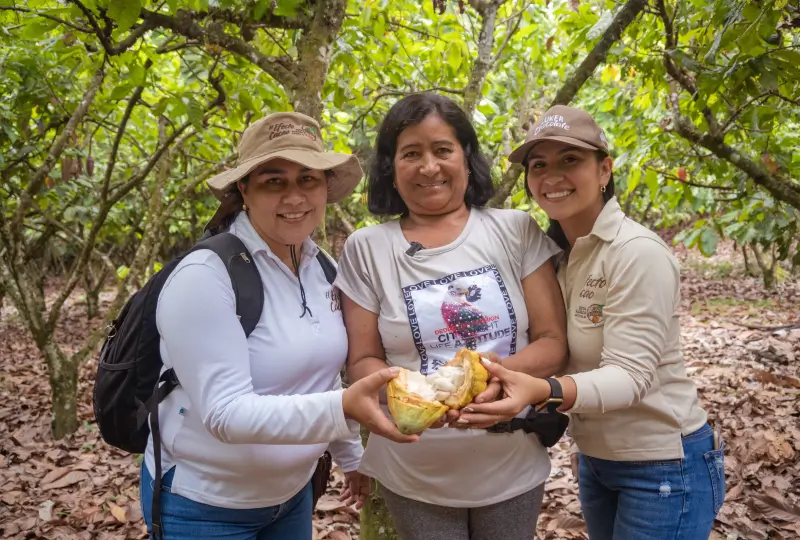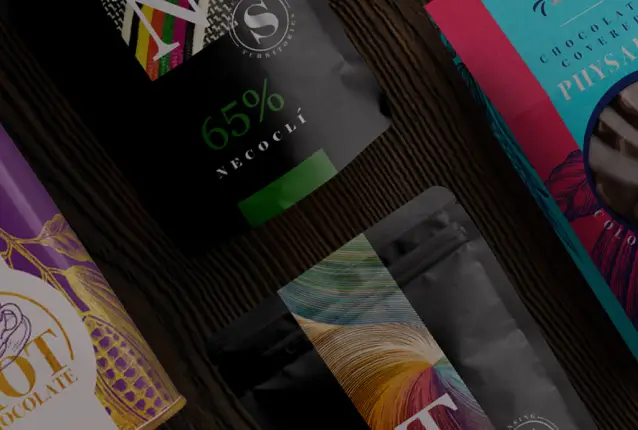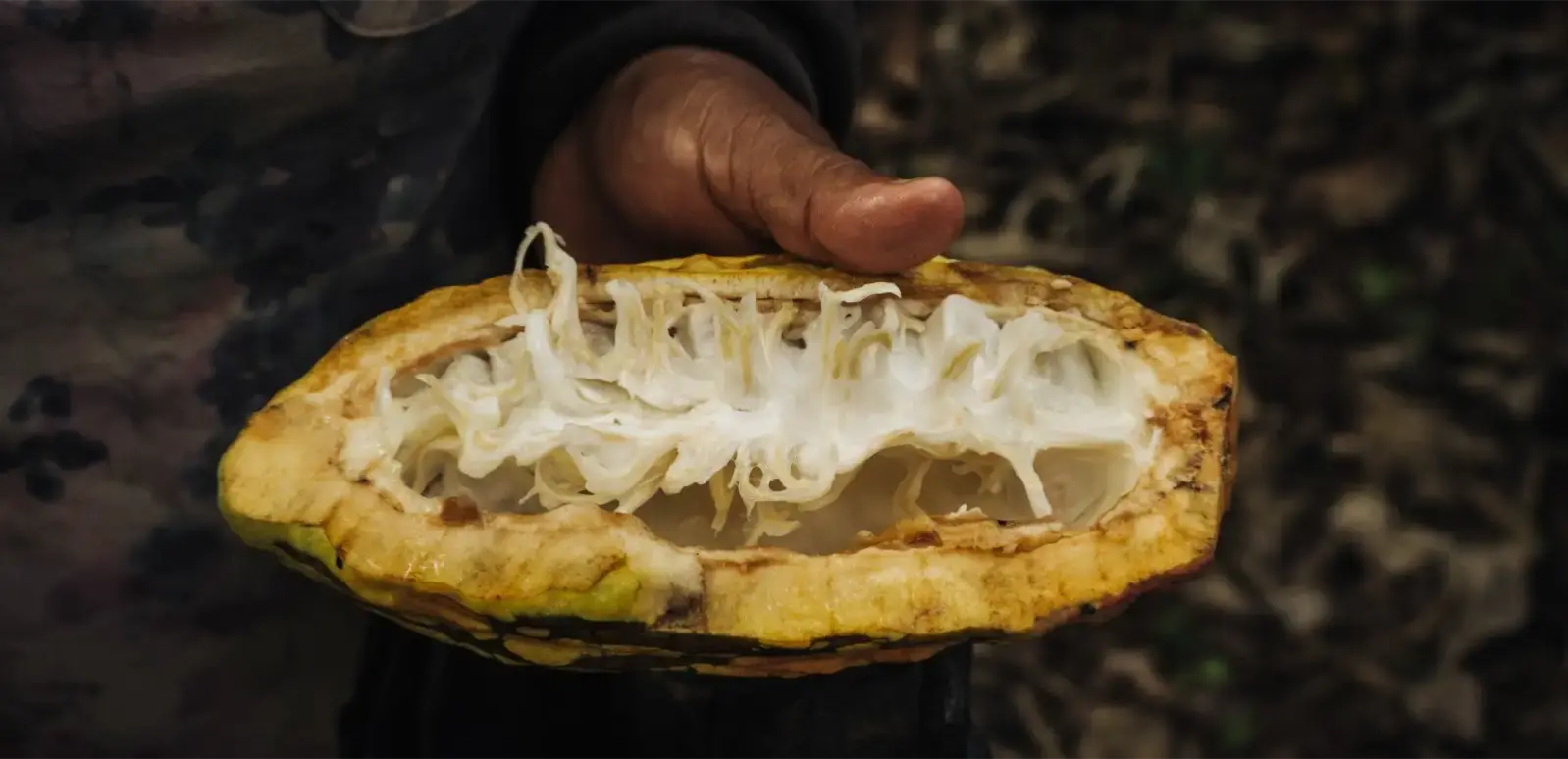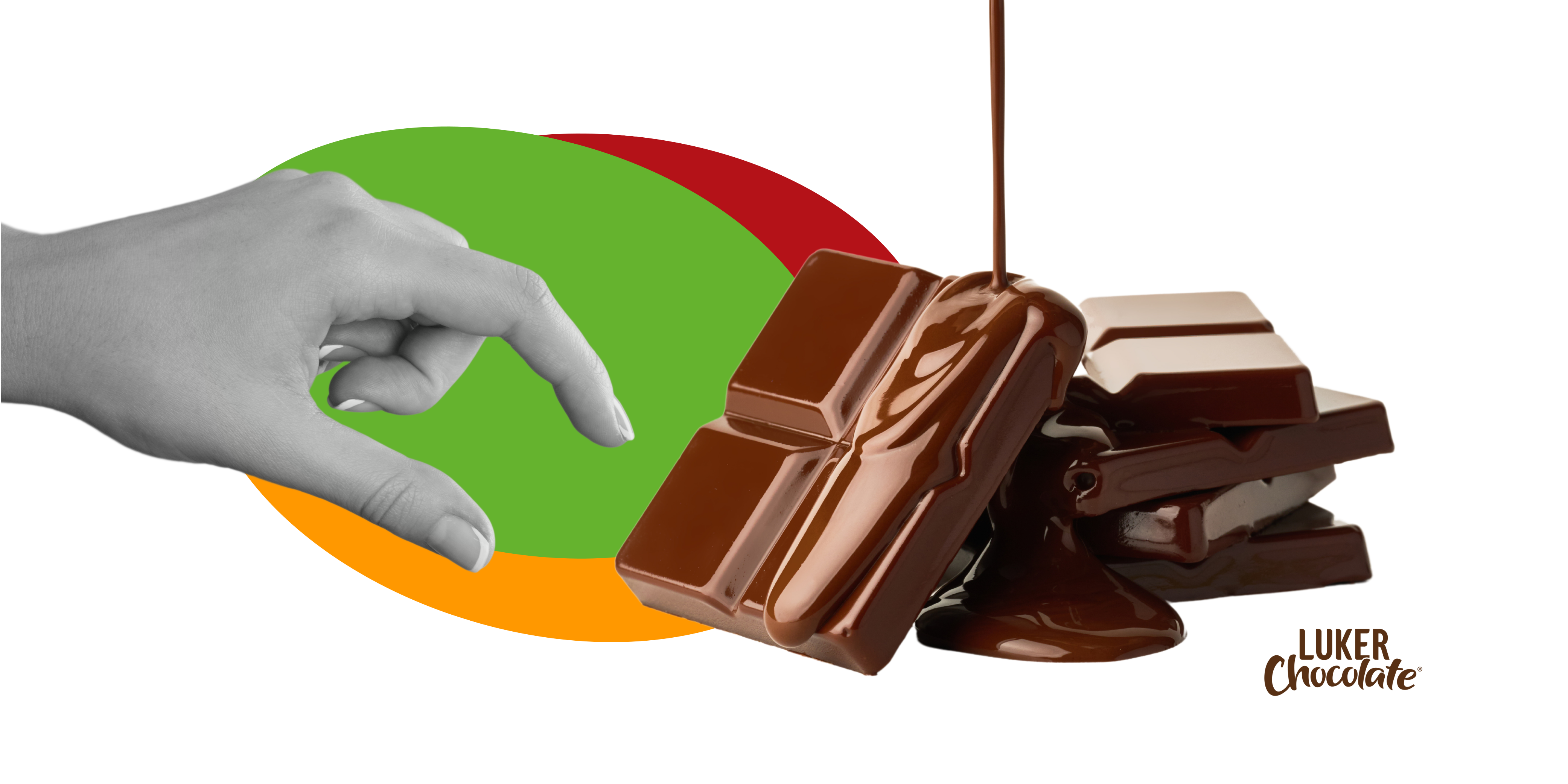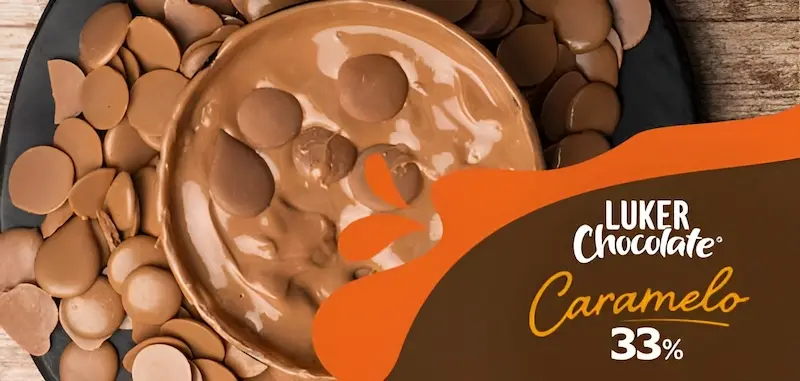This post was originally published on September 14th, 2022, and has been enhanced and updated for accuracy and comprehensiveness.
Explore the possibilities of caramel chocolate for enhancing product innovation in chocolate businesses and food-beverage industries.
Caramel chocolate formulation is not just a popular flavour (as you can see in the stats in this blog)—it’s a cornerstone for innovation in food and beverage R&D. Its classic sweet flavour combined with subtle notes of butter and nuts makes it ideally suited for several applications.
This blog post examines why caramel is particularly suited for development projects, focusing on its complex flavour profile, consumer appeal, and versatility.
Navigate this content menu and find answers to your questions:
- Caramel-Added vs. Milk-Caramelised
- Key Differences in Production and Application
- Implications for Product Development
- Consumer Appeal and Market Trends
- What is Blonde Chocolate?
Dazzling dairy flavour perfectly balanced with some sweet tones, formidable caramel notes.
The Composition of Caramel Chocolate Couverture: Caramel-Added vs. Milk-Caramelised
When discussing caramel chocolate couverture, it’s crucial to distinguish between two methods that impact the final flavour outcome of a product:
Caramel-Added Flavour VS Milk-Caramelised Chocolate Couverture:
First of all, the direct addition of caramel and the addition of caramelized milk/sugar serve different purposes.
Adding caramel mainly adds sweetness and flavour to the chocolate. In contrast, caramelized milk provides the necessary milk solids for milk chocolate, adding authenticity to the caramel flavour and providing nutritional and functional contributions from the milk.
These ingredient selections are not interchangeable, as they are used for different purposes.
When it comes to enhancing the caramelized notes in milk chocolate or focusing its profile on caramel, there are two main approaches to consider.
These include caramelised ingredients such as caramelised sugar, caramelised milk, and caramelised powders (a mixture of sugars and dairy derivatives such as butter or buttermilk). Another approach is the direct incorporation of caramel flavours.
Caramel Couvertures are unique because they create a feeling of familiarity for the consumer. They also present a perfect canvas for brands and chocolatiers looking to create new and exciting taste combinations or textures in confectionery, baking, and even hot chocolate (a Colombian favourite).
Key Differences in Production and Application:
- Flavour Complexity: Milk-caramelised couverture tends to have a more sophisticated profile, appealing to those who appreciate the subtlety of toasted, almost nutty undertones. In contrast, caramel-added ingredients offer a more straightforward and robust caramel flavour, which can dominate other flavours in the product.
- Texture and Colour: The caramel-added approach usually exhibits a softer texture and a more pronounced golden colour compared to the milk-caramelised version, which maintains a closer appearance and texture to traditional chocolate but with a slight golden tint.
- Suitability for Various Products: Caramel-added ingredient might be preferred in applications where a strong caramel flavour is desired, such as salted caramel bars, in caramel-centered snacks or even in bakery.
Milk-caramelised couverture is excellent for more sophisticated products where a hint of caramel complements the overall flavour, like in fine baking or gourmet chocolate bars.

Caramelo 33% chocolate wafer
Implications for Product Development
Choosing between caramel-added vs milk-caramelised chocolate couverture involves considering the desired flavour profile, texture, and (mainly) the product’s market positioning.
Innovative R&D teams can further explore unique applications such as savory confections or experimental products that leverage the unique properties of caramel chocolate couverture.
UPS & DOWNS OF USING BOTH CARAMELISED MILK COUVERTURE VS ADDING CARAMEL FLAVOURS TO THE CHOCOLATE
USING A CARAMELISED MILK COUVERTURE
UPS
- Intensity and authenticity of flavour: By using caramelised powdered ingredients, a more authentic caramel flavour is achieved with an intensity that can be perceived more uniquely in milk chocolate.This is because ingredients are caramelised beforehand, which are then used in the chocolate recipe. This can result in a richer and more satisfying sensory experience for consumers looking for a distinctive flavour profile.In addition, there are different types of caramel such as toffee, dulce de leche, fudge and cajeta, which can be achieved through the prior caramelisation of powders that will be integrated into the chocolate in the preparation of the chocolate.
- Texture and colour:
Caramelised couvertures usually have a fine texture and mix easily with the milk chocolate during production, which helps maintain a uniform and pleasant consistency in the final product. In addition to providing the caramel profile, they can add fat to the final product and directly influence the product’s mouthfeel.In addition, and very significantly, they add colour to the final product.
Because they are already caramelised, they already have that Maillard colour, burnt and golden, which will give and define the final authentic colour of the milk chocolate, which, because it is caramelised, we want to see a golden colour.
DOWNS
- Production constraints in mixing: Mixing caramelised powder ingredients with milk chocolate may require special attention to ensure even distribution and avoid lumping, which could imply a more delicate and detailed production process. Caramelised powders have an intermediate/high dosage within the formulation, requiring ideal physicochemical characteristics to achieve proper integration into the chocolate and greater attention to what proportion to integrate into the chocolate.

ADDING CARAMEL FLAVOURS TO THE CHOCOLATE
UPS
- Precise control of the flavour profile:
By using caramel flavours, you can have precise control over the flavour profile of the milk chocolate, allowing specific adjustments to achieve the desired intensity and quality of the caramel flavour. You can look for a very specific caramel profile, which can be difficult to achieve in a caramelised powder. - Textural consistency:
The caramel powder flavours are evenly blended with the milk chocolate, which contributes to maintaining a consistent and pleasant texture throughout the final product without significantly affecting its structure. - Ease of integration: The nature of caramel flavours makes them easy to integrate during the production process due to their low dosages in chocolate, which streamlines workflow and reduces the possibility
DOWNS
- Potential lack of authenticity: Although caramel flavours can provide a good flavour profile, some consumers may perceive them as less authentic compared to caramelised ingredients, especially in products that promote a gourmet or artisanal experience.
- Need for additional adjustments: Depending on the quality and concentration of the caramel powder flavour, additional adjustments to the recipe or production process may be needed to achieve an optimal balance between flavour, texture and colour in the milk chocolate. Especially in the colour, as these flavours did not provide a golden/caramel colour, other ingredients are needed to simulate this final colour to match the perceived caramel flavour.
Caramelo 33% is an incredibly versatile canvas for many delicious creations. Its creamy texture makes it the perfect canvas to adopt new flavours such as hazelnut or sea salt, leading to more adventurous chocolate creations such as the flawless consumer favourite – salted caramel. It’s also superb for panning a crunchy center like cashews or cocoa nibs or pairing with spicy and exotic flavours like chai.
Product Team – Luker Chocolate 2022
Consumer Appeal and Market Trends
In today’s market, consumers are increasingly drawn to indulgent experiences that evoke positive emotions. This type of profile completely embodies this, particularly when it comes to snacking choices, where consumers often opt for decadent treats made with the best ingredients.

Caramel is one of the most popular flavours in confectionery launches for 2024. Caramel flavour can be achieved through different approaches as we’ve seen above. Nonetheless, there is another opportunity in caramel besides milk chocolate: blonde chocolate.
What is Blonde Chocolate?
Blonde chocolate, sometimes referred to as caramelized white chocolate, presents an enticing alternative within the chocolate spectrum. This gourmet delight is known for its golden colour and rich, caramel-like flavour that emerges from the careful caramelization of white chocolate.

The Science Behind Blonde Chocolate
The process of creating blonde chocolate involves gently heating white chocolate to caramelize the sugars and milk solids it contains. This method imparts deep, golden notes and enhances the flavour, infusing it with notes of caramel, toffee, and a slight hint of toasted biscuit. This transformation is a result of the Maillard reaction, a chemical process where sugars and proteins react under heat to develop new flavours and colours.
Importantly, despite its unique flavour and appearance, blonde chocolate shares the same crystallization curve as white chocolate. This similarity in their physical properties means that blonde chocolate can be handled and processed in much the same way as white chocolate, providing versatility and ease of use in production settings.

Versatility: Multiple Applications
Blonde chocolate’s complex flavour profile makes it highly adaptable in a variety of culinary applications. It excels in both standalone confections, such as bars and truffles, and as an ingredient in desserts, where it can add a sophisticated twist to cakes, mousses, and sauces. Its rich caramel flavour complements a wide array of ingredients, enhancing recipes with its distinctive taste.
Market Trends and Consumer Appeal
Increasingly, consumers are drawn to novel flavours and gourmet chocolate experiences, positioning blonde chocolate as a premium option within the confectionery market. Its unique characteristics and luxurious appeal cater to the sophisticated palate, making it a favourite among those looking to indulge in a new chocolate experience.
Leveraging Blonde Chocolate for Innovation
For chocolatiers and manufacturers, blonde chocolate offers a promising avenue for product development. Its unique taste and processing compatibility with white chocolate allow for creative product innovations that can stand out in the competitive market. By incorporating blonde chocolate into your product line, you can captivate and expand your customer base, meeting the demand for high-end, innovative chocolate products.
A flavour set in “newstalgia”
Consumers are increasingly drawn to indulgent experiences that evoke positive emotions in today’s market. This type of profile completely embodies this, particularly when it comes to consumer snacking choices, where consumers often opt for decadent treats made with the best ingredients.
According to Food Technology’s research from industry experts, including flavourists, chefs, trendspotters, futurists, entrepreneurs, and more, ‘Nostalgia’ and ‘Newstalgia’ are two trends that we expect to see develop in 2024 and beyond.
Some brands find that incorporating a sense of nostalgia may be as simple as relaunching a flavour that was popular back in the day, such as caramel.
Why?
Caramel is one of the most popular chocolate confectionery flavours, with a 36.78% compound annual growth rate (CAGR) from 2020-2023 in new product launches. It has seen robust growth in the United States market. (Innova Market Insights, 2024)
Indulgent Escapes
The pleasure of eating chocolate and the mental respite from following strict dietary rules contribute significantly to making this category an exception to healthy eating practices. (Euromonitor 2023)

